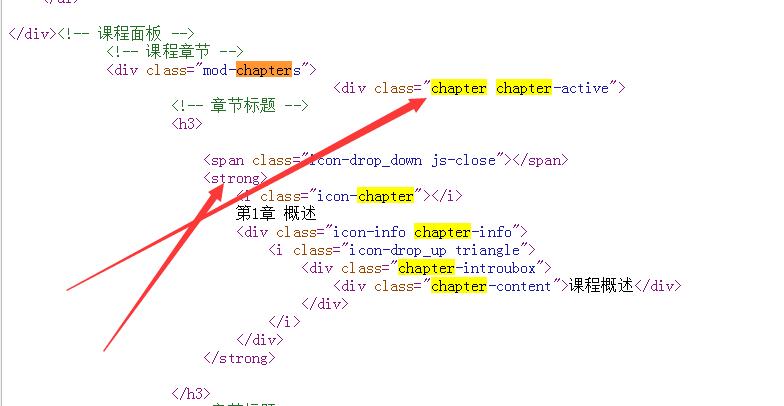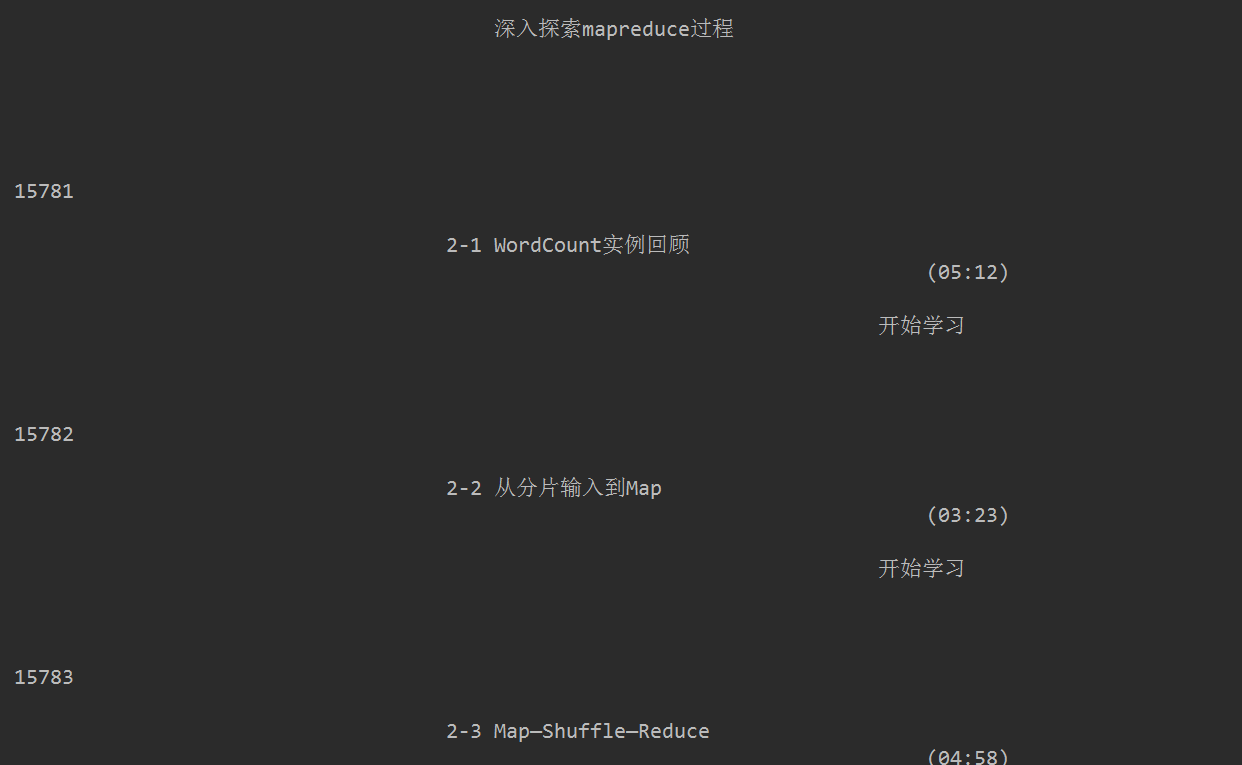以爬慕课网Hadoop进阶课程为例,用Node写一个简单的爬虫:
先抓取这个网站的源码:
var http = require('http'); var url = 'http://www.imooc.com/learn/890'; http.get(url, function(res) { var html = ''; res.on('data', function(data) { html += data; }) res.on('end', function() { console.log(html); }) }).on('error', function() { console.log('获取课程数据出错!') })
然后分析这个页面的Dom,如图:



每大章节都被一个chapter包围,抓取下来就是一个数组,对每个item,这张的大标题在strong里面,每章的小章节在video标签里,然后小标题就是J-media-item的text,id就用video的编号,字符串截取下来。
代码:
var http = require('http'); var cheerio = require('cheerio') var url = 'http://www.imooc.com/learn/890'; function filterChapters(html) { var $ = cheerio.load(html) var chapters = $('.chapter') // [{ // chapterTitle: "", // videos: [ // title: "", // id: "" // ] // }] var courseData = [] chapters.each(function(item) { var chapter = $(this) var chapterTitle = chapter.find('strong').text() var videos = chapter.find('.video').children('li') var chapterData = { chapterTitle: chapterTitle, videos: [] } videos.each(function(item) { var video = $(this).find('.J-media-item') var videoTitle = video.text() var id = video.attr('href').split('video/')[1] chapterData.videos.push({ title: videoTitle, id: id }) }) courseData.push(chapterData) }) return courseData } function printCourseInfo(courseData) { courseData.forEach(function(item) { var chapterTitle = item.chapterTitle console.log(chapterTitle + ' ') item.videos.forEach(function(video) { console.log(video.id + video.title + ' '); }) }) } http.get(url, function(res) { var html = ''; res.on('data', function(data) { html += data; }) res.on('end', function() { var courseData = filterChapters(html) printCourseInfo(courseData) }) }).on('error', function() { console.log('获取课程数据出错!') })
当然爬下来的结果格式有点杂乱无章:

可以在加点代码格式化一下,也可以用IO写进磁盘文件。